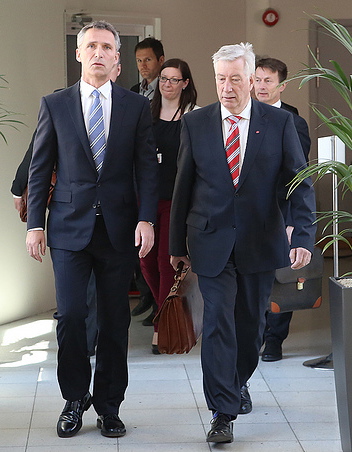Norway’s left-center government coalition aims to keep the country’s strong economy on what Finance Minister Sigbjørn Johnsen called “a steady course” when he released the government’s revised state budget on Tuesday. Opposition politicians claim he’s spreading Norway’s wealth much too thinly.

“Careful economic management is critical to secure good development in the Norwegian economy,” Johnsen said. Johnsen, from the Labour Party, continues to resist calls by opposition parties including the conservative Progress Party (Fremskrittspartiet, Frp) to spend more of Norway’s vast oil wealth, not least by tapping the country’s huge sovereign wealth fund known as the “oil fund” to invest in needed infrastructure.
Some call Johnsen “the luckiest finance minister in the world,” because of the oil and gas revenues that flow into state coffers every single day. The oil wealth has kept Norway’s economy strong at a time when other governments around the world face debt crises and high unemployment.
Oil fund management rules set up several years ago allow Norway’s state government to only use up to 4 percent of the capital in the fund every year. Even though Johnsen is spending record amounts of the money pumped up by its offshore oil and gas industry, the new funding he unveiled Tuesday amounts to just 3.3 percent of the fund.
That means Johnsen could spent another NOK 28 billion and still stay within what’s called “handlingsregelen” (the 4 percent rule), but he doesn’t want to spend any more. That, he feels, would in the long run be bad for the economy.
He insisted his revised budget was still “a budget for growth and welfare.” It offered new funding for, among other things, measures to combat Norway’s growing problems tied to migrant beggars, more money for local governments, more money for environmental and climate measures and more money for transport projects, like improving fire prevention measures inside Oslo’s main train tunnel. It also provides for some tax relief aimed at stimulating non-oil-related businesses.
The minister in charge of cultural issues, Hadia Tajik, announced NOK 60 million in funding for the first phase of a new National Museum at Vestbanen in Oslo, to which the National Gallery and the Museum of Applied Arts will eventually move. The total project has a budget of NOK 5.3 billion.
Farmers, meanwhile, were given just over half of what they’d demanded in the form of new subsidies and tariff protection. They were disappointed with their allocation of NOK 1.02 billion, although state officials claimed it will provide average raises of around 8.5 percent, or NOK 25,000 per farmer per year, twice the level of pay increases granted most other Norwegian workers.
Justice Minister Grete Faremo also announced new anti-terror measures as the revised budget was rolled out. The aim is to make Norway’s police intelligence unit PST better able to identify potential lone terrorists like Anders Behring Breivik, who bombed government headquarters and massacred 69 mostly young Labour Party members in the terrorist attacks of July 22, 2011.
Views and News from Norway/Nina Berglund
Please support our news service. Readers in Norway can use our donor account. Our international readers can click on our “Donate” button:

